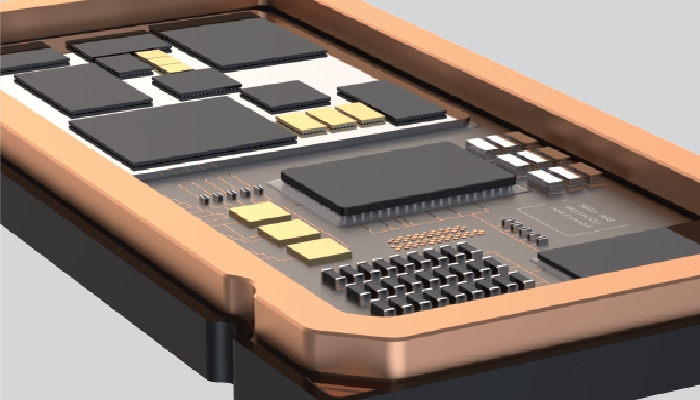Component technologies have revolutionized the way software is developed. Components are self-contained, modular pieces of code, designed to perform specific functions or provide specific services. Such components can be developed and deployed independently, reducing development and debugging time and effort.
Component technologies have made it easier for developers to create software in a modular, efficient way. By allowing developers to break complex projects down into components, the complexity of the entire system is significantly reduced. This not only simplifies the development process, but also improves the maintainability and scalability of the software.
Component technologies make it easier to develop efficient, effective and reusable code. Developers can create components that can be reused for multiple projects, making development more efficient and cost effective. Reusable components also reduce development time and effort as developers don’t have to start from scratch each time.
Component technologies can also be used to create an entire system from small, independent parts. These components can range from large services to tiny utilities, making it easy for developers to create powerful software applications. By breaking a system down into its smallest components, developers can more easily identify and resolve problems.
Component technologies have enabled developers to create highly resilient and reliable software systems. By creating independent components, developers can make sure that if one component fails, the rest of the system remains operational. This makes component-based systems more reliable and robust than traditional monolithic software systems.
Components can also be used to create distributed systems. By allowing components to span multiple computers and networks, developers can build powerful applications that can scale to meet the needs of their users.
Component technologies have revolutionized the way software is developed, allowing developers to create more efficient, reliable and resilient software systems. By breaking projects down into components, developers can create code that is customizable, reusable, and easy to maintain. With component-based technologies, developers can quickly and easily create software applications that are powerful, reliable and cost effective.
2. The term ‘component technologies’ has become increasingly popular among businesses in recent years, as organisations look to develop more effective and efficient ways of working.
Component technologies are developing components, such as programs, templates, or services, which can be used to build applications with fewer resources and less effort. By leveraging existing components, businesses are able to build new applications faster, at a lower cost and with less coding.
The most common type of component technology is application programming interfaces (APIs). These are services that allow developers to consume data from other organisations and build applications on top of them. They are an important part of the modern application architecture, as they enable developers to connect their applications with third-party services and data.
Other popular components used in component-driven development are microservices, which allow developers to break down their applications into smaller, more manageable parts. They are perfect for businesses that need to scale quickly, as microservices can be adapted to fit different workloads.
Component technologies can help businesses in many ways. Firstly, they reduce the time it takes to build applications and speed up the development process. They also reduce costs, as developers don’t have to write code from scratch or learn how to use new technologies. Furthermore, they promote collaboration by enabling developers to share code and components, which makes it easier to create new applications.
In addition to these benefits, component technologies also allow developers to rapidly create applications that are cross-platform. This makes them even more attractive to businesses, as they can create applications that are accessible across a variety of devices and platforms.
It’s clear that component technologies are essential for businesses looking to speed up their development processes and make their applications more accessible. With the increasing popularity of component-driven development, it’s likely that component technologies will become even more important in the future.
3. As the world of technology continues to evolve, it is important to stay up to date on the various components that comprise our digital infrastructures. Component technologies are pieces of hardware or software that facilitate communication, storage, and/or computation within an electronic system. These components can often be independent of one another, yet in combination create the functionality of a powerful and efficient system.
Applications of component technologies range from making a website appear on a user’s screen, to managing vast amounts of data in a data centre. Companies rely on components to provide the structure and functionality of their products, from consumer electronics such as smartphones and tablets, to cloud computing services and Power over Ethernet (PoE) infrastructures.
Innovations in component technologies are constantly being developed to address the changing needs of consumers and businesses. For example, cloud technology is used to store and access data from any location and is a powerful tool for businesses to achieve efficiency and cost savings. Components such as PoE switches enable physical and virtual devices to communicate with one another with convenience and flexibility, while higher capacity storage devices and faster processors help to increase overall stability and performance.
Furthermore, improvements to component technologies such as artificial intelligence (AI) and machine learning (ML) provide users with additional automation capabilities, allowing businesses to optimise their operations and user interfaces to offer better services and experiences. Additionally, software-defined storage (SDS) has allowed organisations to reduce costs and improve data security, with components such as memory controllers providing increased flexibility and scalability.
Component technologies are vital for the success of businesses and consumers alike, as they provide necessary infrastructure, computation, and networking functions. Without the integration of these components, many websites and applications would not exist, and the user experience would be poor at best. With the advancement of component technologies, businesses are empowered to come up with creative solutions and increase their efficiency. As the world of technology continues to evolve, component technologies remain an integral part of the internet age.
4. In today’s world of rapidly evolving technology, component technologies are rapidly becoming a cornerstone of innovation. This development, which allows for the separation of individual parts of a system and then their combination in different ways, makes it much easier for product designs to adapt quickly and at low cost to a wide variety of circumstances.
Component technologies allow users to create custom solutions using reusable, interchangeable parts that were designed with specific needs and goals in mind. They also offer a range of benefits such as improved scalability, cost savings, and increased flexibility. The components of a system can be created, modified and combined depending on the individual goals and needs of users.
Component technologies can also be used to improve existing products, provide new solutions, and develop an entire ecosystem of products built on interconnected parts. By taking this approach, the cost associated with the design and prototyping of products can be significantly reduced. Furthermore, by sharing parts across different systems, it is possible to leverage economies of scale, drive down costs, and reduce the time-to-market.
Component technologies provide users with a wide variety of modular solutions and can be used for a variety of reasons, such as to create custom solutions, develop quick prototyping solutions, and improve the overall quality of products. This technology can also be used to create a range of complex solutions and enable rapid innovation cycles that can be deployed in a variety of markets.
For businesses, component technologies represent an opportunity to revolutionize their product design process. By using these technologies, companies can assemble the exact components that meet their needs and quickly make changes to their products without the costs associated with traditional product design. Companies can also use the components to develop whole ecosystems of integrated products and services to meet changing customer needs.
In conclusion, component technologies are providing a range of benefits to businesses looking to remain competitive in today’s rapidly changing technological landscape. By taking advantage of this technology, companies can quickly create customized solutions to serve their customers, reduce time to market, and drive down costs associated with traditional product design. As technology continues to advance, new opportunities to use component technologies will continue to arise, making them an increasingly important part of product design and innovation.
5. Component technologies are essential components of modern web and software architectures. Often referred to as microservices, they power capabilities across many applications, helping them to stay connected and communication between systems to be more effective.
Component technologies are intensively used in various web and software applications and architectures, such as eCommerce, customer relationship management, digital advertising, and machine learning. Through the implementation of component technologies, the distributed system of the application components is scattered across different platforms and locations. These components integrate seamlessly with each other and can be reused to minimize the cost and duration of development.
Component technologies can also be compared to the building blocks of a house; different components come together to form the entire structure. By leveraging these components, businesses can simplify complexity and significantly reduce development times. For example, a company may choose to reduce their development costs and time by relying on components for tasks such as authentication, code generation, and automatic testing.
Component technologies also enable greater scalability and reliability, as well as:
• Faster development times and a more flexible approach to development;
• Secure and reliable communication between different components;
• Better performance and maintainability;
• Lower overall cost.
As businesses continue to embrace component technologies in their applications, they will continue to reap the benefits and open up new possibilities for automation and innovation. By leveraging component technology, businesses can significantly reduce development time and cost, speed up application deployments, and dramatically improve system performance and user experience.



